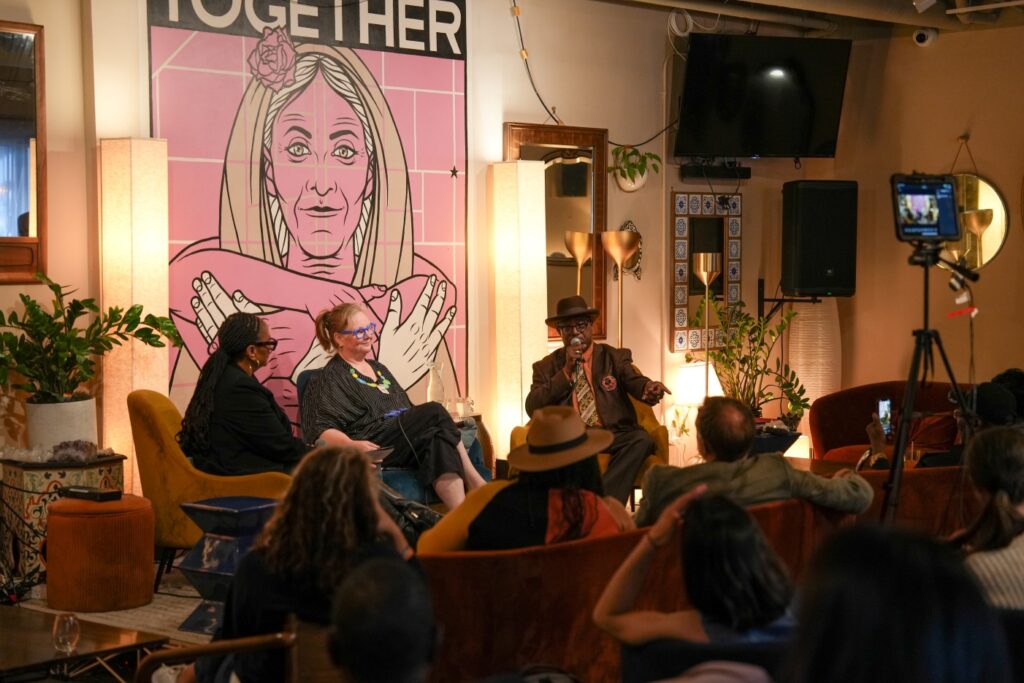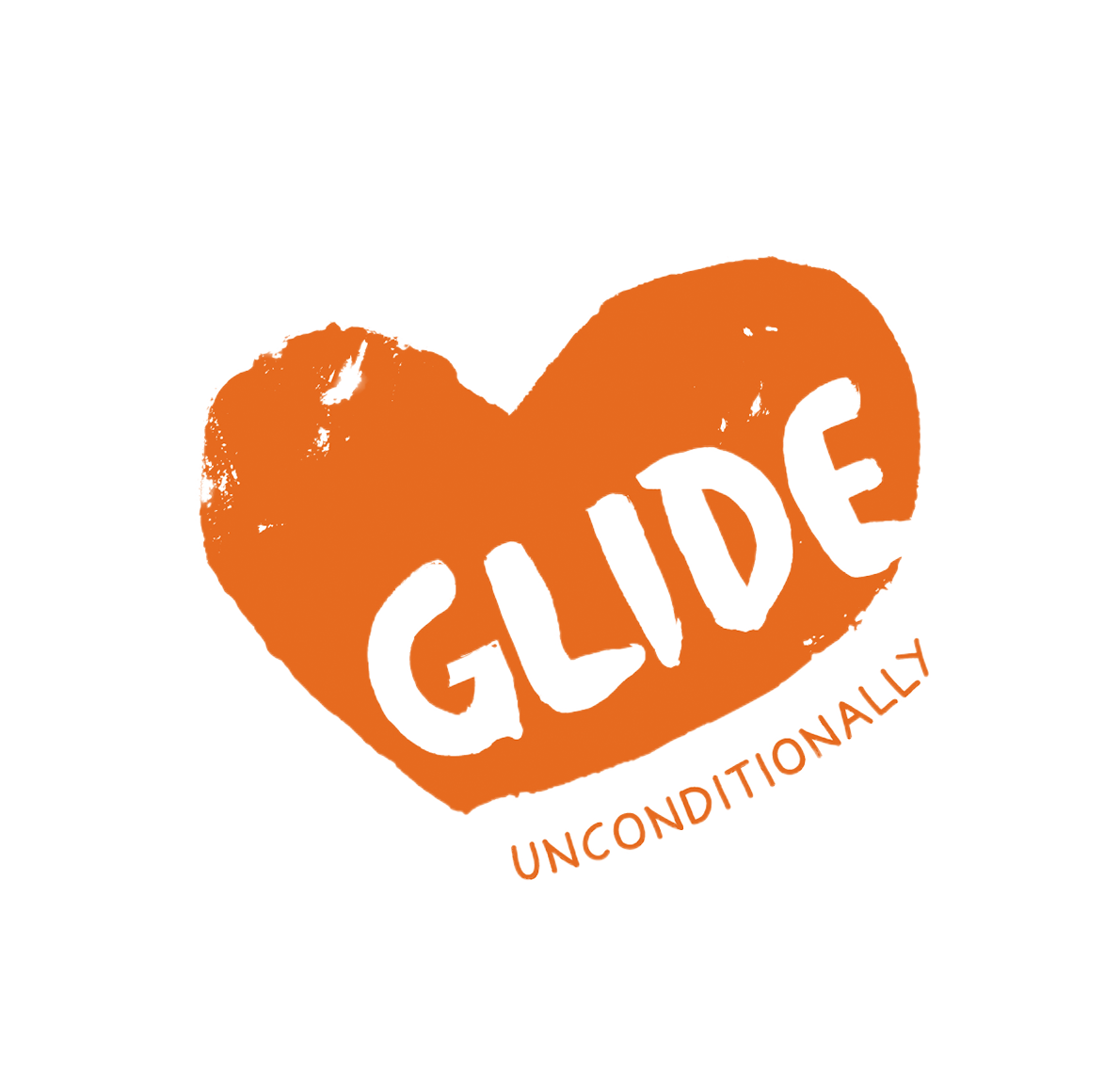
At Manny’s in San Francisco this September, a timely and heartfelt conversation took place—one that’s not just urgent for our city, but deeply personal for so many. Moderated by Dr. Gina Fromer, President and CEO of GLIDE, the event featured two leaders on the front lines of addiction and recovery work: Richard Beal, Director of Recovery Services at Tenderloin Housing Clinic, and Lydia Bransten, Executive Director of The Gubbio Project.
In a city grappling with a public health crisis and visible human suffering on its streets, the conversation wasn’t about quick fixes or ideology. It was about what works—what’s real—for different people. And what emerged was a shared truth: there is no single path to recovery.
“Addiction is not just substance use. It’s what happens when someone loses hope.”
Dr. Fromer opened the night by naming what so many San Franciscans feel but struggle to articulate. “Addiction is more than substance abuse,” she said. “It’s pain, it’s trauma, it’s loss. And the people hurting the most are often the ones we see every day on our streets.”
GLIDE, rooted in radical inclusion and unconditional love, has long been a sanctuary for people seeking recovery, healing, and community. But Dr. Fromer wanted to make one thing clear: “There’s a false perception that GLIDE doesn’t do recovery. That couldn’t be further from the truth. We are recovery. We walk with people wherever they are—methadone, Suboxone, abstinence, harm reduction. It’s not one or the other. It’s a spectrum. And we serve all of it.”
Two Paths, One Goal: Healing
For Lydia Bransten and Richard Beal, this work isn’t theoretical. It’s personal. It’s lived.
Lydia, whose own recovery journey brought her to this calling, recalled finding her purpose as an art therapist at St. Anthony’s. “I discovered a community of people who are beautiful and struggling,” she shared. “Everyone deserves dignity. We don’t give it to them—they already have it. What we offer is respect. We build trust, and that’s the foundation for healing.”
Richard, a recovery counselor for more than 25 years, spoke from raw experience. “I didn’t know anything about AA or NA. I only knew the DA,” he said. “I was 12, selling 50-cent joints. I never had a job until recovery. Now, I look back and say: if I can do it, you can too.”
Richard’s voice is deeply rooted in abstinence-based recovery, a model that saved his life—and the lives of many he’s walked alongside. But he also recognizes the value of harm reduction. “I’m grateful harm reduction exists,” he said. “But abstinence is the purest form of it. We can’t just hand someone a foil, or pipe, and walk away. If you value a life, you can’t let someone suffer without offering a path out.”
“Fentanyl changed everything.”
Both panelists agreed: the drugs on the streets today are deadlier than ever before. Fentanyl has upended decades-old models and demands urgent, adaptive care.
“Harm reduction today isn’t what it was,” Lydia explained. “We’re seeing people who don’t even know they’re using fentanyl. It drags you deep. That’s why our harm reduction work includes medical care, a place to rest, connections to treatment, even art. We’re not just handing out supplies—we’re building a bridge to something better.”
She shared the story of a woman who had been living on the streets for six years. “We helped her get her wounds cleaned. She started talking. Now she runs our art program. She’s not sober yet—but she’s getting there. She’s awake again. And that matters.”
Richard, while critical of some harm reduction programs, emphasized that real recovery often starts with a relationship. “I’ve lost two brothers, my first wife, my nephew—to addiction. I can’t just sit back and hand someone a pipe. But I do believe in meeting people where they are—as long as we don’t leave them there.”
Bridging the Divide
The tension between harm reduction and abstinence isn’t new. What’s refreshing is the willingness of leaders like Richard and Lydia to talk—really talk—across that divide.
“We’ve got to stop meeting in separate rooms,” Lydia urged. “We’re working with the same people. Instead of fighting on social media, let’s sit down and coordinate care.”
Richard agreed. “If Lydia calls me, I show up. That’s why they call me the Ambassador for Recovery. We need each other.”
Both called for more housing, especially drug-free and sober-living environments, more primary care and mental health services, and more culturally competent providers—especially Black therapists and doctors.
“You don’t get to define my recovery.”
What was perhaps most powerful throughout the evening was the shared insistence that recovery is personal.
“Everyone’s journey is different,” said Lydia. “Some people stay on methadone or Suboxone for life. Some don’t. The goal is health. Dignity. A life worth living.”
Richard echoed that sentiment: “You can be free. You don’t have to be a slave to addiction. Recovery is not just abstinence. It’s a spiritual transformation. It’s being alive.”
And for both, the measure of success isn’t just sobriety. It’s connection. It’s community. It’s love.
Looking Forward: What We Need Now
If there was one takeaway from this conversation, it’s this:
We cannot afford to treat addiction with a one-size-fits-all solution.
We need recovery beds and harm reduction centers. We need safe use supplies and treatment referrals. We need drop-in clinics, job training, sober housing, and mental health care—all at once.
We need to stop pitting providers against each other and start funding the full spectrum of care.
And we need to center the voices of people like Richard and Lydia—people who have walked through fire and come back carrying buckets of water for the next person.
Love Saves Lives
As Dr. Fromer said in closing, “We all want the same thing: for people to be happy, housed, off drugs, and loved. Love saves lives. And everyone—no matter where they are on their journey—deserves that love.”
Whether your path is harm reduction, abstinence, or something in between, the message from this conversation is clear:
There is hope. There is help. And there is no wrong door to recovery.
